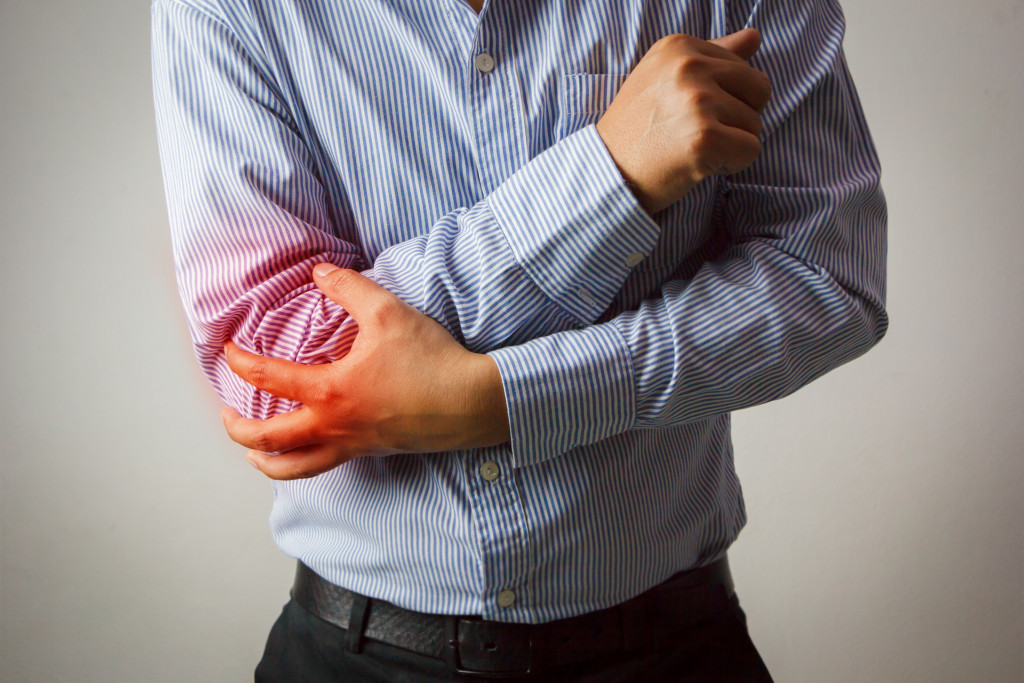Any kind of body pain prevents a person from enjoying life to the fullest. It imposes limitations on what one can do, lowering productivity. It also reduces participation in social activities, causing isolation. Therefore, in addition to physical suffering, the person becomes frustrated and irritable. This can lead to mental health issues such as anxiety and depression.
Whenever a person experiences any type of body pain, it is crucial to see a doctor. Tests will verify the cause of the pain and whether it is a specific illness or is a symptom of a different illness.
Joint pain is one of the most commonly experienced pains and can also involve inflammation. It can range from mild soreness to extreme pain and disability. It can involve the tendons, cartilage, ligaments, muscles, or bones of a joint. Most joint pains are due to osteoarthritis, bursitis, gout, and tendinitis. Other more serious diseases have joint pain among their symptoms, but it is up to a doctor to rule these out.
Illnesses with Joint Pain
Osteoarthritis often affects joints in the hands, hips, knees, and spine, and is the most common form of arthritis. It is the wearing down of protective cartilage cushioning the ends of bones as people age. The damage is irreversible but pain and joint function can be managed with pain medication, therapy, regular activity within prescribed bounds, and maintaining optimal weight.
Therapy covers physical therapy that teaches the patient proper exercises, occupational therapy that teaches the patient how to do daily tasks safely, and transcutaneous electrical nerve stimulation (TENS) that uses low-voltage electrical current for short-term pain relief. The doctor will recommend an injection of a corticosteroid or a lubricant into the affected area in more serious cases
Bursitis usually affects the elbow, shoulder, and hip but can also occur in the big toe, heel, and knee. It is the inflammation of bursae which are small sacs filled with fluid that cushion the bones, muscles, and tendons near joints. In minor cases, taking a doctor-prescribed pain reliever, applying ice to the area, and rest will suffice. In more serious cases, a corticosteroid injected into the area immediately relieves pain, therapy prevents recurrence, and a temporary walking device can aid mobility. Surgical draining of the inflamed bursae is rarely necessary.
Gout often affects the big toe but can also affect fingers, wrists, elbows, knees, and ankles. The joint becomes inflamed, red, hot, and extremely painful such that the mere touch of a piece of cloth becomes intolerable. It is also considered a type of arthritis, but it happens when sharp uric acid crystals build up in or around a joint. The body produces uric acid to break down purines, therefore, a diet rich in purines increases uric acid.
Food high in purine includes organ meats, red meat, tuna, anchovies, sardines, shellfish, and food high in fructose. Alcoholic drinks, especially beer, also increase uric acid. People who are overweight produce more uric acid, as do people with a family history of gout.

The doctor will prescribe medication to immediately relieve pain and swelling but soreness and tenderness may remain for a week or two. The doctor will also prescribe maintenance medications for people with recurrent flareups. A patient must ask about the side effects of long-term use and also about using an all-natural gout supplement. If left untreated, gout recurs more and more often with greater intensity at each flareup and with more joints involved. Joints can then erode and get damaged. Recurrent gout flareups can also cause the development of kidney stones.
Tendinitis usually affects the shoulder, elbow, wrist, knee, or heel when the tendon attaching the muscles to the bone beside a joint gets inflamed. It is often caused by repetitive motion. In mild cases, taking over-the-counter pain medication or applying anti-inflammatory topical creams, icing the affected area, and full rest will resolve the problem.
For more serious cases, the doctor will inject a corticosteroid to reduce the inflammation and relieve pain immediately. For chronic cases, physical therapy is a first-line treatment to stretch and strengthen the muscles and tendons. Other possible treatments include dry needling of the tendon to stimulate healing, a minimally invasive removal of tendon scar tissue using an ultrasonic soundwave device, and surgical repair of the tendon.
Pain may just be a signal from the body to rest but it could also be a warning about something serious. It is best to heed the body and consult a medical specialist when experiencing any kind of pain. It can bring peace of mind if it is just a minor issue. On the other hand, it can also be a lifesaver when a serious illness is diagnosed early enough for treatment.
